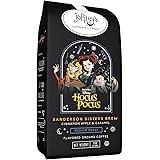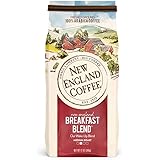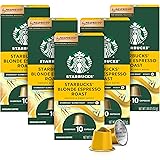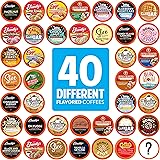Do you ever wonder what goes into making that perfect cup of coffee? Perhaps you’re keen to upgrade your daily brew or simply understand the differences between the vast options available. If you’ve just watched the video above, you’ve already started a fantastic journey into the world of coffee. This guide will expand on those essential basics, helping you become a more confident coffee enthusiast.
Making great coffee doesn’t have to be complicated. With just a few simple tips and a basic understanding of the beans, roasts, and brewing methods, you can significantly elevate your daily ritual. Let’s delve deeper into the fundamentals of coffee, from the types of beans to mastering your brewing technique.
Understanding Coffee Types: Arabica vs. Robusta
When you begin exploring the world of coffee, you’ll quickly encounter two primary types of coffee beans: Arabica and Robusta. These aren’t just fancy names; they represent significant differences in taste, caffeine content, and cultivation.
Arabica: The Flavorful Choice
Arabica coffee beans are celebrated for their smoother, sweeter, and more aromatic qualities. They often carry complex flavor notes reminiscent of chocolate, nuts, fruit, and caramel. This delicate flavor profile is why Arabica is often considered the premium choice in the specialty coffee world.
However, Arabica plants are more sensitive. They require specific growing conditions, thriving at high altitudes with ample rainfall and moderate temperatures. This delicate nature also makes them more susceptible to diseases, which contributes to their higher cost in the market.
Robusta: The Bold and Breezy Option
In contrast, Robusta coffee beans are known for their strong, bold, and often more bitter taste. This distinct flavor can sometimes include an earthy or rubbery undertone. While less favored for its taste in specialty coffee, Robusta is a powerhouse when it comes to caffeine.
The Robusta plant is much hardier, capable of growing in hotter climates and lower altitudes. It’s also more resistant to diseases, making it easier and cheaper to cultivate. Furthermore, Robusta contains almost double the caffeine of Arabica, making it an excellent choice for those seeking a significant energy boost.
Choosing Your Bean and Exploring Blends
Imagine if you want a smooth, rich flavor for your morning meditation. Arabica would be your go-to. Conversely, if you need an intense jolt to kickstart a busy day, Robusta might be the better fit. Many commercially available coffees are blends of Arabica and Robusta.
These blends aim to combine the best of both worlds: the refined taste of Arabica with the robust body and caffeine punch of Robusta. When shopping, look for labels that specify “100% Arabica” for a premium flavor or “Arabica/Robusta blend” if you desire a balance of taste and energy. If the package doesn’t specify, the price can often be a good indicator, with more expensive options generally being Arabica or Arabica-dominant blends.
Decoding Coffee Roasts: Light, Medium, and Dark
Beyond the type of bean, the roast level profoundly impacts the coffee’s final flavor. Coffee beans undergo a transformation when roasted, and this process brings out different characteristics. Roasts typically range from light to dark, sometimes even very dark, and each level offers a unique experience.
How Roasting Affects Flavor, Not Caffeine
A common misconception is that darker roasts contain more caffeine. The video correctly points out that the caffeine content remains largely consistent across different roast levels. While there can be minor variations due to bean density changes during roasting, they are generally insignificant. Choose your roast based purely on flavor preference.
Exploring the Roast Spectrum
-
Light Roasts: These beans are roasted for a shorter period, resulting in a lighter color and a more pronounced original flavor of the coffee bean. You’ll often find bright, acidic notes, fruity undertones, and sometimes a floral aroma. Imagine sipping a coffee with hints of berries and a lively acidity.
-
Medium Roasts: A popular choice, medium roasts strike a balance between acidity and body. They tend to be sweeter and more balanced, with notes of chocolate, nuts, or caramel emerging. This roast often provides a well-rounded and approachable flavor profile.
-
Dark Roasts: Roasted until almost black and often shiny with oil, dark roasts feature a bolder, sometimes smoky flavor. The original characteristics of the bean are less prominent, giving way to flavors like dark chocolate, burnt caramel, or toasted nuts. The body is typically heavier, and the bitterness is more pronounced.
Your best bet is to experiment. Buy small quantities of different roasts and see which one appeals most to your palate. Don’t be swayed by marketing claims about caffeine; focus on the taste you enjoy most.
The Unsung Hero of Coffee: Water Quality
Often overlooked, the quality of your water is just as important as the coffee beans themselves. Since coffee is primarily water, the properties of that water directly impact the flavor of your final brew. Using good water is not just a suggestion; it’s a foundational step to great coffee.
Why Mineral or Filtered Water Matters
Tap water can contain impurities like chlorine, excessive minerals, or sediment. These elements can chemically interfere with the extraction of desirable flavors from your coffee grounds, leading to off-tastes. Imagine trying to bake a cake with salty water; the outcome would be less than ideal.
Mineral water, or properly filtered tap water, is ideal because it removes these unwanted elements while retaining a balanced mineral content. This balance helps to extract the full spectrum of flavors from your coffee, allowing its true potential to shine. Investing in a water filter pitcher or using bottled water can make a noticeable difference in your coffee’s taste.
Mastering Coffee Brewing Methods
Once you have your quality beans and water, it’s time to brew. The video highlights two excellent methods for beginners: filter coffee and the French press. Both are straightforward and produce delicious results, but each offers a distinct coffee experience.
General Brewing Guidelines
A good starting point for your coffee-to-water ratio is one tablespoon of coffee per cup (approximately 6-7 grams per 180-200ml of water). This ratio can be adjusted to your preference. If you like stronger coffee, add a little more; for a milder cup, use slightly less. Also, ensure your coffee grind size is appropriate for your chosen brewing method.
The ideal water temperature for brewing is just below boiling point, typically between 195°F and 205°F (90°C to 96°C). If the water is too hot, it can scorch the coffee, resulting in a bitter taste. If it’s too cool, it won’t extract enough flavor, leading to a weak or sour brew.
The Simple Joy of Filter Coffee
Filter coffee, often made with a pour-over cone or an automatic drip machine, is a beloved method for its clean and bright cups. The paper filter traps fine particles and oils, resulting in a clear, crisp brew.
-
Prepare Your Setup: Place a paper filter in your brewing device. Then, add your ground coffee to the filter; do not compact it.
-
Pre-warm Your Cup: Pour some hot water into your serving cup, let it sit for a few seconds, then discard it. This prevents the coffee from cooling down too quickly upon contact with a cold cup.
-
The Bloom: Once your water is at the right temperature (just below boiling), pour a small amount over the coffee grounds, just enough to saturate them. Let it sit for about 30 seconds. This is called the “bloom,” and it allows gases to escape, preparing the coffee for optimal extraction.
-
Slow and Steady Pour: Slowly pour the remaining hot water over the grounds in a circular motion. This process should take about a minute or so. A slow, even pour ensures consistent extraction.
The result is a clean, aromatic cup of coffee that highlights the nuanced flavors of your beans. It’s an excellent daily staple.
The Richness of French Press Coffee
The French press offers a full-bodied, rich coffee experience. Because it uses a mesh filter instead of paper, it allows more of the coffee’s natural oils and fine sediment to pass through, contributing to a “thicker” mouthfeel and robust flavor.
French presses are quite affordable, with decent options available from around $10. You don’t need the most expensive model to get a great brew.
-
Pre-warm Both: Just like with filter coffee, pre-warm your serving cup. Also, pour hot water into the French press carafe, swirl it around, and then discard the water. This ensures your brew stays at the optimal temperature.
-
Add Coffee and Water: Add your coarse ground coffee to the pre-warmed French press. Pour your hot water (just below boiling) over the grounds, ensuring they are fully saturated.
-
Steep: Place the lid with the plunger assembly back on the press, but don’t plunge yet. Let the coffee steep for four minutes. This immersion time is crucial for flavor development.
-
Slow Plunge and Serve: After four minutes, slowly and steadily push the plunger down. This separates the grounds from the brewed coffee. Serve immediately.
You’ll notice the distinct oils and richer texture on top of a French press coffee. While these oils contribute to its unique flavor, the video wisely advises enjoying French press coffee in moderation, especially if you’re concerned about cholesterol levels. It’s a fantastic option for when you desire a truly indulgent cup of coffee.
Enjoying Your Perfect Cup
Whether you prefer a bright Arabica from a filter or a rich Robusta blend from a French press, the ultimate goal is enjoyment. Add sugar or milk if that’s how you like your coffee, grab your favorite game, binge-watch a show, or simply savor a moment of quiet reflection. The beauty of understanding the basics of coffee is that it empowers you to create the perfect beverage tailored to your taste, turning a simple drink into a delightful experience.







